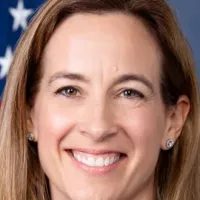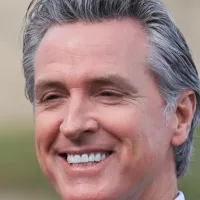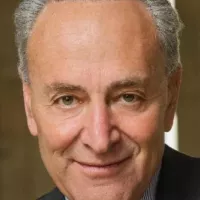1393
During the early 14th century, it was recorded that in what is now Zhejiang alone, ten million packages of 1,000 to 10,000 sheets of toilet paper were manufactured annually. During the Ming dynasty (1368–1644 AD), it was recorded in 1393 that an annual supply of 720,000 sheets of toilet paper (approximately 2 by 3 ft (60 by 90 cm)) were produced for the general use of the imperial court at the capital of Nanjing. From the records of the Imperial Bureau of Supplies of that same year, it was also recorded that for the Hongwu Emperor's imperial family alone, there were 15,000 sheets of special soft-fabric toilet paper made, and each sheet of toilet paper was perfumed.
1747
The rise of publishing by the eighteenth century led to the use of newspapers and cheap editions of popular books for cleansing. Lord Chesterfield, in a letter to his son in 1747, told of a man who purchased
1857
Joseph Gayetty is widely credited with being the inventor of modern commercially available toilet paper in the United States. Gayetty's paper, first introduced in 1857, was available as late as the 1920s. Gayetty's Medicated Paper was sold in packages of flat sheets, watermarked with the inventor's name. Original advertisements for the product used the tagline "The greatest necessity of the age! Gayetty's medicated paper for the water-closet".
1883
Seth Wheeler of Albany, New York, obtained the earliest United States patents for toilet paper and dispensers, the types of which eventually were in common use in that country, in 1883. Toilet paper dispensed from rolls was popularized when the Scott Paper Company began marketing it in 1890.
1883
The use of paper for hygiene has been recorded in China in the 6th century AD, with specifically manufactured toilet paper being mass-produced in the 14th century. Modern commercial toilet paper originated in the 19th century, with a patent for roll-based dispensers being made in 1883.
1942
Softer, two ply toilet roll was introduced in Britain in 1942, by St Andrew Mills in Walthamstow; this became the famous Andrex.
1973
In 1973, Johnny Carson joked in his Tonight Show monologue about comments made by Wisconsin congressman Harold V. Froehlich about the possibility of a toilet paper shortage. Subsequently, consumers purchased abnormal amounts, causing an actual shortage in the United States for several months.
2006
The format of individual sheets of toilet paper, which is given by a perforation line, varies nationally. In Germany, Holland, France, Poland, Switzerland, for example, about postcard size is standard (about 100 × 140 mm), so about DIN format (DIN A6 105 × 148 mm). In England, the usual format is already somewhat wider, about 115 × 135 mm. The most extreme landscape format with 115 × 102 mm exists in Thailand. The most extreme portrait format (not counting toilet paper rolls without any perforation) is 100 × 366 mm; a promotional toilet paper from Schmidt Spiele in Germany. Manufactured toilet paper sheet in the United States was sized 4.5 in (110 mm) × 4 in (100 mm). Since 1999 the size of a sheet has been shrinking; Kimberly-Clark reduced the length of a sheet to 4.1 in (100 mm). Scott, in 2006, reduced the length of their product to 3.7 in (94 mm). The width of sheets was later reduced giving a general sheet size of 3.7 in (94 mm) long and 4.1 in (100 mm) wide. Larger sizes remain available.
March 2020
During the COVID-19 pandemic, toilet paper shortages were reported in March 2020 in multiple countries due to hoarding and panic buying. At first, few believed the pandemic would be serious. Later, people realized they might need to stock up on certain items in case of a shelter-in-place order, or in case they did not know how long such an order would last; suppliers could not assure that they could keep up with demand. However, manufacturers continued to produce even more than they had before. Demand was higher for the types of toilet paper used at home. In some countries the bidet was already seen as a solution, and a survey before the pandemic had indicated an increasing number of Americans would be interested. Amid the panic buying during the pandemic, the Australian toilet paper brand Quilton donated a million of toilet paper rolls to vulnerable Australians who were struggling due to the shortages of toilet paper.
Trending

3 days ago Ohtani inspires two-way dreams, Rickwood Field considered, Dodgers celebrate historic game.

4 months ago Jade Cargill leads WWE's Charge in Atlanta with Evolution Store and Queen of Ring.

6 months ago Scherzer's Rehab Advances Amid Trade Rumors and Blue Jays' Pitching Concerns.

49 minutes ago Derek Jeter Reveals Unconventional Slump Fix: The Golden Thong Legend Confirmed!

49 minutes ago New Jersey Governor Race: Sherrill and Trump's Policies Impacting Voters

7 months ago LaMelo Ball's Career-High and Bridges' Insight: Team Success in Charlotte Hornets' Battle
Popular

Gavin Newsom is an American politician and businessman currently serving...

Doug Ford is a Canadian politician and businessman currently serving...

Candace Owens is an American political commentator and author known...

Chuck Schumer is the senior United States Senator from New...

XXXTentacion born Jahseh Dwayne Ricardo Onfroy was a controversial yet...

Charlie Kirk is an American right-wing political activist entrepreneur and...